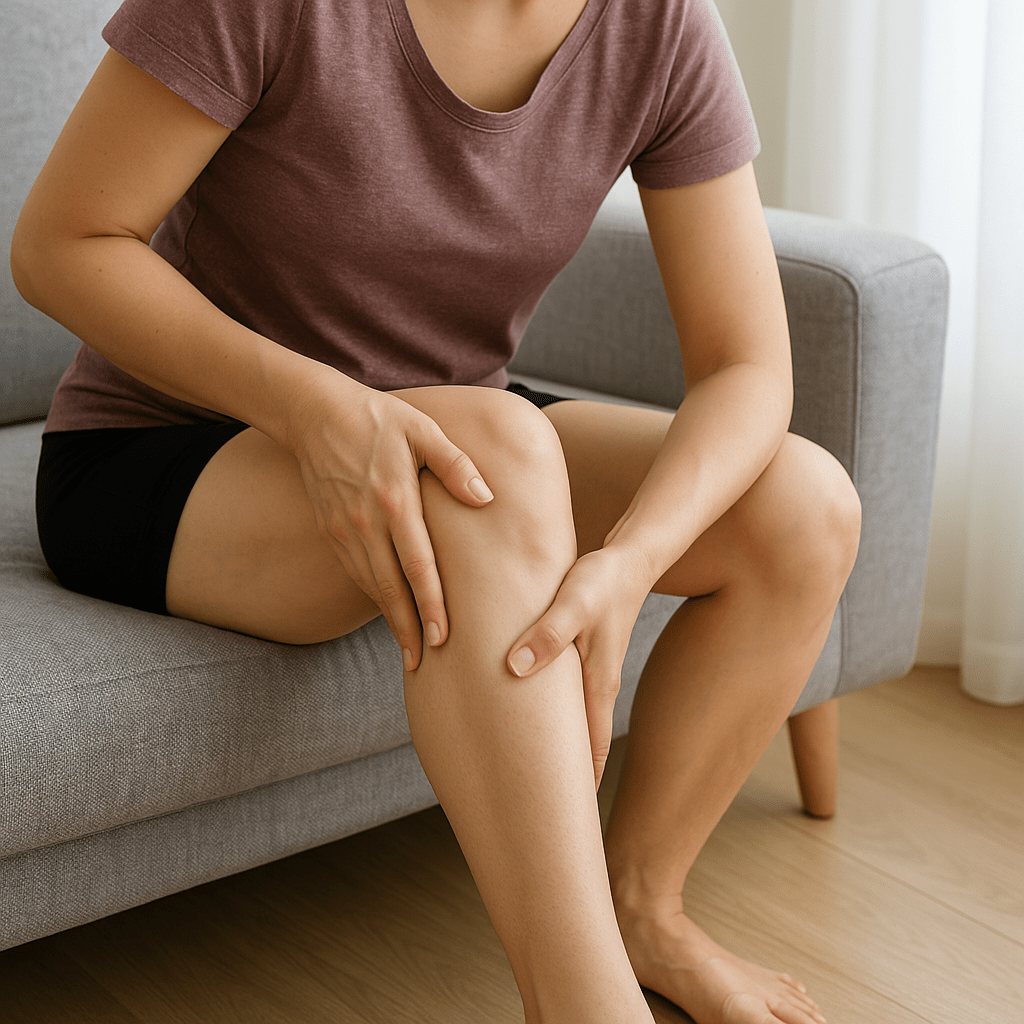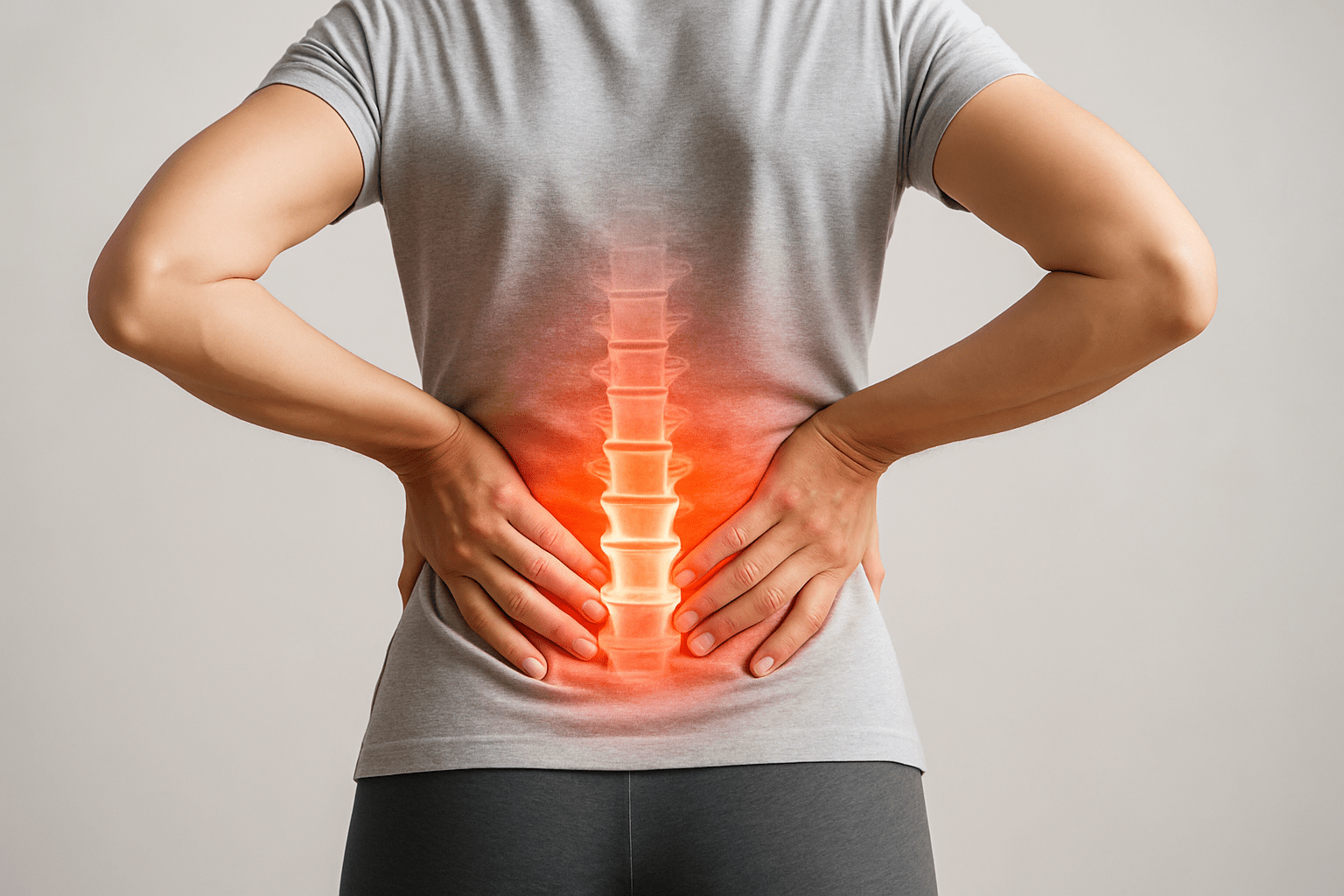Slipped disc: symptoms, causes and preventive measures
A strong back can also be delightful. Did you know that an elephant spends most of its life standing up, even when it sleeps? For us humans, of course, this is not an option. Our back in particular needs regular relief, which it receives during sleep. But our spine also needs movement to stay healthy. But what happens when one of the most important structures in our back, the intervertebral discs, causes problems? In this article, you can find out more about slipped discs, their symptoms and treatment options and whether a massage can provide relief from a slipped disc. Reading tip: More about the various effects of massages...


A strong back can also be delightful. Did you know that an elephant spends most of its life standing up, even when it sleeps? For us humans, of course, this is not an option. Our back in particular needs regular relief, which it receives during sleep. But our spine also needs movement to stay healthy.
But what happens when one of the most important structures in our back, the intervertebral discs, causes problems? In this article, you can find out more about slipped discs, their symptoms and treatment options and whether a massage can provide relief from a slipped disc.
Reading tip: You can find out more about the diverse effects of massages in our article From head to toe - massages help here.
Note: Our article cannot replace medical expertise. If you suffer from persistent pain, be sure to consult a doctor.
Let's start with a basic question to understand how these extremely annoying and often agonizing complaints can arise in the first place.
What is a slipped disc and what pain does it cause?
A herniated disc occurs when the inner core of an intervertebral disc is pushed out through a tear in the outer ring. This can lead to pain, numbness and even paralysis if nerve roots or the spinal cord are affected.
While a herniated disc can cause serious discomfort such as back pain, which is usually located at the bottom, it is often confused with other back conditions, such as lumbago, which is usually triggered by muscle tension and causes less severe symptoms. A look at the structure of our intervertebral discs helps us to better understand how herniated discs can occur.
Reading tip: You can find out more about measures for back pain in our article on the symptoms, causes and treatment of back pain.
What does an intervertebral disc look like?
Our spine consists of individual vertebrae, between which the intervertebral discs are located. These act as shock absorbers and consist of a soft, gelatinous core, the nucleus pulposus, and a firm outer ring, the annulus fibrosus.
This structure enables the intervertebral discs to absorb pressure and stress and thus ensure the mobility and stability of the spine. So what happens when these structures are damaged and how does this manifest itself?
Herniated disc and its symptoms - what does a damaged disc feel like?

Source: https://www.helios-gesundheit.de/magazin/news/02/bandscheibenvorfall/
A herniated disc can cause a variety of symptoms that vary depending on the location and severity. There is often severe pain that can radiate to the extremities. A herniated disc in the lumbar spine often causes pain in the lower back that can radiate down the leg, known as sciatica pain.
In the case of a prolapse in the cervical spine, the pain often radiates to the arms and hands. In the thoracic spine (thoracic spine), pain in the upper back and chest area is typical. In addition to the pain, numbness, tingling or even paralysis can also occur. In women, the pain can also often trigger a feeling of nausea in addition to severe pain.
Reading tip: Pain that is difficult to localize or radiates can have a variety of causes. In our article about migratory joint pain we specifically addressed this topic.
Let's take a look at the factors that actually lead to a slipped disc and how it is diagnosed.
Causes, risk factors and diagnosis of herniated discs
A slipped disc is usually caused by age-related wear and tear and degenerative changes to the intervertebral discs. Risk factors such as obesity, lack of exercise and poor posture can increase wear and tear and therefore the risk. Heavy physical work and awkward lifting movements also put additional strain on the intervertebral discs.
Imaging procedures such as MRI or CT are generally used for diagnosis in order to determine the exact location and extent of the prolapse. Damage to the annulus of the intervertebral disc can thus be visualized and the affected areas identified.
Due to the radiating pain, those affected often only have vague assumptions as to the level of the spine at which the cause could lie. Once the affected disc has been localized, your doctor will draw up an appropriate treatment plan.
What is the treatment for herniated discs?

Depending on the degree of severity, the healthcare professional will use suitable forms of treatment. In many cases, conservative therapy is sufficient. Painkillers and anti-inflammatory medication alleviate the symptoms.
Physiotherapy is also recommended for a slipped disc. This involves working on strengthening the muscles in the affected region and improving mobility in the long term. Targeted exercises such as the bridge, float or cat hump are particularly effective. In severe cases, surgery may be necessary to relieve the pressure on the nerves caused by the damaged disc.
Home remedies such as heat therapy or massages can help to relax the surrounding muscles. They provide temporary relief, but should only be used after consulting a doctor, as improper use can make the symptoms worse.
Can a herniated disc be caused by massage?
The question of whether a massage can cause a slipped disc is often asked. In principle, massages cannot cause a slipped disc. Rather, they serve to relax the muscles and relieve pain. However, it is important that massages are carried out professionally.
Particularly in the case of existing back problems, improper or overly vigorous massages can exacerbate existing complaints or lead to further problems. A doctor should therefore always be consulted before massages are used to treat a herniated disc.
Reading tip: We have addressed the effect that massages could be the cause of pain and suffering in our article on Muscle pain after a massage dedicated to this topic.
Our aim is, of course, to prevent a slipped disc from occurring in the first place. So let's take a look at what you can do to prevent it.
Preventing slipped discs: exercises and other tips
It sounds like the holy grail and almost too simple to be true, but regular exercise is essential to prevent a slipped disc. However, the fact that an active lifestyle is not always compatible with our everyday lives often makes it a challenge and explains why so many people are affected by slipped discs.
Sports such as swimming, yoga and Pilates strengthen the back muscles and promote mobility, while they can be practiced gently and moderately. Targeted exercises such as the forearm support or leg raises also help to stabilize the muscles.
In addition to exercise, the right mattress also plays a crucial role. Because unlike our beloved elephants, the sleep phase for us also serves to relax and relieve the spine. But which mattress is suitable for a slipped disc? A mattress that supports the natural curvature of the spine and provides sufficient support can prevent pressure points and relieve pressure on the spine.
What else should sufferers bear in mind to prevent back pain and promote spinal health?
Take care of your back and it will thank you for it
Unlike the back of an elephant, which requires no special care even when it is asleep, we humans need to pay particular attention. Our everyday lives and the lack of exercise that often comes with them place increased strain on our spine. An active lifestyle and targeted measures can alleviate and even prevent the symptoms of a slipped disc:
- Regular exercise and sport strengthen your muscles and promote mobility.
- Additionally promote the stability of the spine with targeted exercises suitable for preventing a slipped disc.
- A suitable mattress also supports the natural curvature of the spine and prevents pressure points.
- Professional massages and heat therapy can help to relax the muscles and relieve pain. They are also an excellent complement to regular exercise.
We recommend that you always listen to your body's signals and seek medical help in good time. The best strategy for a healthy back is a certain amount of proactivity to strengthen your back preventively. Remember: an active lifestyle, but also increased mindfulness towards your body and the time you should take for it, minimize your risk of a herniated disc, but also numerous other complaints.
Cover image: Benjamin Wedemeyer, other images: Helios.de, Stocksnap

Co-founder and Managing Director of Massage Chair World. With his expert knowledge and industry expertise, he helps private individuals and companies to find the right massage chairs for relaxation, health and vitality. The individual expert advice is provided both by telephone or video chat, as well as in the exhibition outside Stuttgart.




